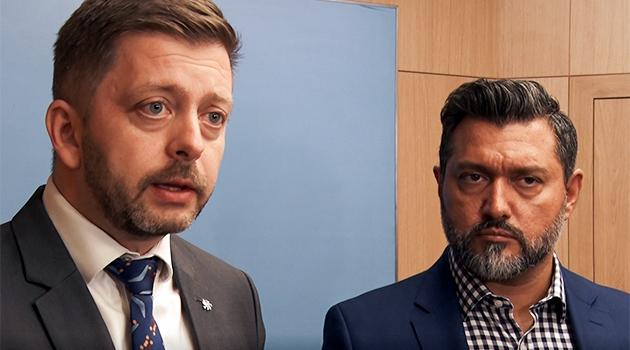Romani NGO offers Czech Interior Ministry list of places where different kinds of housing could be built for homeless Romani refugees from Ukraine

The nonprofit organization Romodrom, which is participating in the organization of the “tent city” for Romani refugees from Ukraine in Prague’s Troja neighborhood, has handed over to Czech Interior Minister Vít Rakušan (Mayors and Independents – STAN) a list of locations where places for the longer-term accommodation of Romani refugees could be built, and Nikola Taragoš, director of the NGO, has said that he believes the “tent city” in Troja and any others like it that will be set up can just function while the weather permits, i.e., until the end of September. Rakušan has confirmed to journalists that he has received the offer and will be dealing with it.
“We’ve just bought ourselves a little time,” Taragoš said to the Czech News Agency about the Troja project, which involves the City of Prague, the Refugee Facilities Administration, and firefighters. According to the NGO director, Romodrom has offered to the Interior Ministry a list of plots of land on which temporary structures and specific residential real estate such as apartment units and apartment buildings can be built; the capacity should be sufficient for the several hundred Romani refugees from Ukraine who are living now at the main train station in Prague.
Romodrom would prefer that accommodation for the Romani refugees from Ukraine take place in the buildings they have offered. “The housing units we have proposed to Rakušan are from Romani developers and they will get them for free,” the director said.
Taragoš sees reaching agreement with local residents on siting such housing as the problem. One of the offered places for the construction of residential units is in the broader Prague region, three are near the capital, and other capacities are scattered around the country.
Like the Interior Ministry, Romodrom does not want to disclose specific addresses before reaching an agreement with local governments, as this could harm the plans. According to Taragoš, the necessity for accommodation capacities for Romani refugees from Ukraine is just a repetition of what he called the “standard refugee wave”.
“As long as the refugees keep on coming here, such places for them will be necessary, right now we have them at the main station and in the little tent city,” the Romodrom director described. “During the first months of the war we were accommodating people in a little bit better conditions than in this small tent city.”
Taragoš said the necessity of such places is defined by the number of Romani refugees from Ukraine living not just at the main train station in Prague, but also at train stations in Brno, in Ostrava, and most recently in Pardubice. “Whether these people are entitled [to temporary protection] or not, it is better to provide them with housing and then to resolve that issue,” he said.
“If you do it vice versa, then it will be dealt with by leaving them on the street, which is quite non-standard and we don’t even know how to do it,” he said on behalf of Romodrom. The “tent city” in Troja began functioning last weekend and roughly 140 refugees took shelter there at that time.
